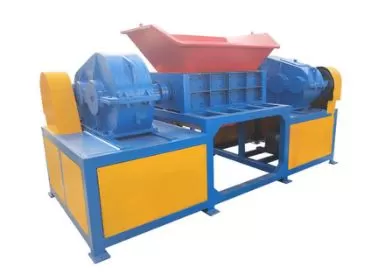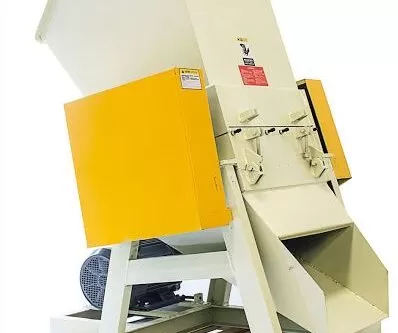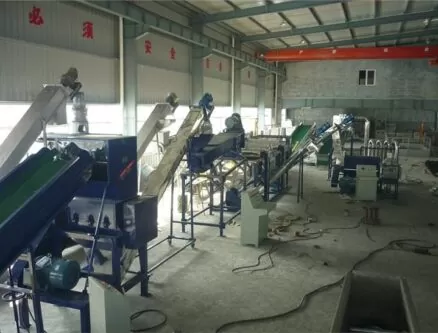Plastic waste. It’s everywhere. Overflowing bins, oceans choked with bottles, landfills rising like man-made mountains. I’ve seen businesses drown in their own scrap. We all want to be greener, cleaner, and leaner—but most of us don’t know where to start. You’ve got heaps of plastic. You want to recycle. But the big question is: which machine actually does the job?
The machine commonly used for plastic recycling is the plastic shredder or plastic granulator. These are industrial-grade machines designed to crush, cut, and break down plastic waste into smaller, reusable pieces or flakes for further processing.
It’s not just one magic machine, though. There’s a whole lineup involved in the recycling show. Let’s break them down with a bit of flair, shall we?

What types of machines are used in plastic recycling?
There isn’t a single do-it-all machine. Instead, the recycling process relies on a system of machines, each playing a key role. Here’s the dream team we use at Amige:
- Plastic Shredders – These machines are beasts. They break large plastic parts into small chunks. Perfect for post-consumer waste, like chairs, buckets, or crates.
- Plastic Granulators – Think of these as precision grinders. After shredding, the material passes through granulators to get even smaller—down to flakes. These flakes are then easier to clean and melt.
- Washing Lines – After size reduction, washing lines clean the plastic. Dirt, glue, food residue—you name it. Gone. A clean flake is a valuable flake.
- Dryers and Dehydrators – No one wants soggy plastic. These machines wring out every drop of moisture, so the flakes don’t steam up in later processes.
- Extruders and Pelletizers – This is where things get hot. Extruders melt the plastic and push it through a die to form spaghetti-like strands. Pelletizers chop those strands into pellets—ready for reuse or resale.
We’ve built and sold every one of these types of machines. Trust me, each has its place.
What is the difference between a shredder and a granulator?
I get asked this a lot. Shredders are the bouncers. Granulators are the stylists.
Shredders rip plastic into chunks. They don’t care about elegance. They just need to reduce volume quickly. You throw in a crate, it comes out as confetti.
Granulators, on the other hand, take that confetti and refine it. They use high-speed rotating blades to cut plastic into precise, uniform flakes.
Here’s my rule of thumb: If your plastic is still the size of your dinner plate, you need a shredder. If it’s smaller than your phone, go straight to the granulator.
Do different plastics require different machines?
Absolutely. Not all plastics are created equal. And not all machines are suited for every type.
- Rigid plastics like HDPE or PP (think: detergent bottles, pipes) love the shredder-granulator combo.
- Soft plastics like LDPE film or plastic bags need a film shredder or crusher designed for thin, stretchy material. Regular machines hate clingy stuff—trust me.
- PET bottles often go through a dedicated bottle washing line with a label remover, hot washer, and spinner.
Each machine needs the right settings, too. Blade speed, mesh size, temperature—these aren’t just numbers; they’re make-or-break variables.

What’s the best machine for small-scale recycling?
Ah, the startup dream. I love this question.
If you’re just starting, I’d say go with a combo unit—a shredder-granulator hybrid. There are compact models that can fit in a workshop. They won’t process tons of plastic per day, but they’ll handle a few hundred kilograms without sweating.
Also, consider:
- Benchtop extruders – Small but mighty, for converting flakes into filament or pellets.
- Mini washing units – A plastic flake isn’t clean until it’s scrubbed.
And remember, even in small setups, safety is non-negotiable. Look for overload protection, blade covers, and emergency stops.
What does a full plastic recycling line look like?
Imagine a factory floor. First, you have sorting tables, where workers or AI systems separate plastic by type and color. Next up: shredders chew up the material. Then the granulators make it flake-sized.
Now comes the washing line. This is usually several tanks and friction washers. After a thorough rinse, flakes go through a centrifugal dryer. Clean, dry flakes move to the extruder, then get chopped into pellets.
Boom—your garbage just became a product.
We’ve sold dozens of full recycling lines. One of our clients processes over 5 tons per day and still sends us thank-you videos. Makes my job feel like saving the world in slow motion.

Are Amige machines suitable for all these stages?
Well, now you’re speaking my language.
At Amige, we design machines for every stage of the plastic recycling journey. From entry-level to industrial-scale, we’ve built:
- Heavy-duty double-shaft shredders
- Precision low-noise granulators
- Fully integrated washing and drying lines
- High-output pelletizing systems
- Even custom setups for special plastics or factory layouts
All of them come with training, remote support, and a lot of hand-holding—until you’re up and running like a plastic-recycling pro.
If you’re serious about turning waste into profit (and doing the planet a favor), we should talk. Or at least grab coffee over Zoom.
What’s the future of plastic recycling machines?
Smart. Modular. Sustainable.
We’re seeing a rise in AI-powered sorting, IoT sensors in machines for predictive maintenance, and solar-powered systems for off-grid setups.
At Amige, we’re investing in energy-efficient motors, low-waste extruders, and even chemical recycling compatibility for tougher plastics.
Because recycling isn’t just about saving material. It’s about saving effort, energy, and emissions.

Conclusion
The best machine for plastic recycling? It depends on your plastic, your goals, and your scale. But with the right setup, recycling becomes not just possible—but profitable. We build those machines. Let’s make waste valuable again.
